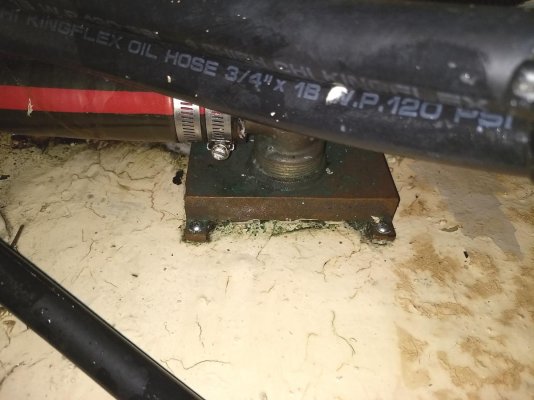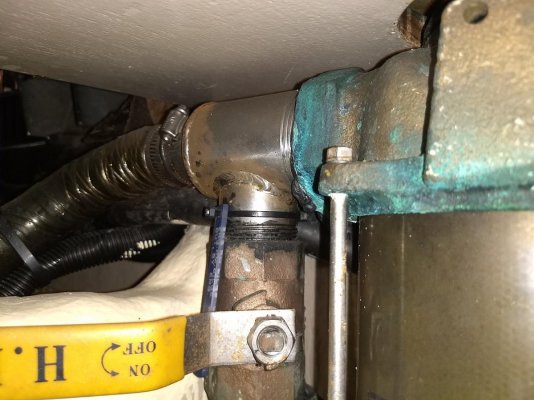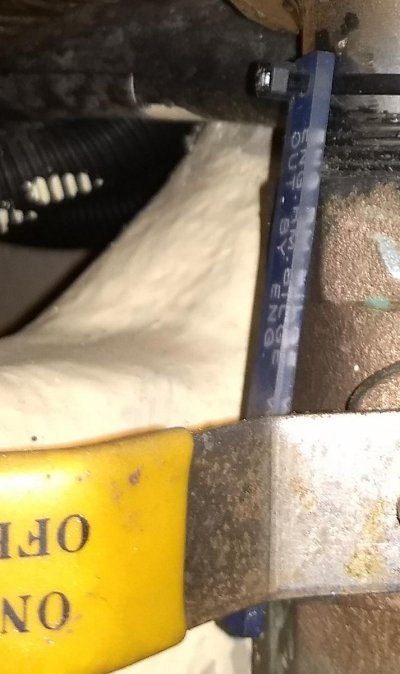menzies
Guru
So I lifted all my ER floorboards today and gave them a thorough washing on the dock and then went in and started on the ER floor. cleaning those and replacing the diapers.
I then saw this "through hull" from the top and saw that it didn't have a valve! Well thinks I, that ain't right, and not what I expected on this boat from what I have seen so far.
Then I took a closer look, and saw from the side that it does not go through the hull after all but is raised up!
Ahah! I think I know what this might be! I followed the hose and sure enough it connects to the RW feed for the starboard engine on the engine side of the strainer and has a valve. By fully opening that valve and fully or partially closing the strainer valve you manage the water intake of the emergency bilge pump.
I have heard of the theory of disconnecting an engine RW hose when in dire straights - but had never seen a permanent set up like this.
When I was post processing the photos I also noticed the label!
Neat!
I then saw this "through hull" from the top and saw that it didn't have a valve! Well thinks I, that ain't right, and not what I expected on this boat from what I have seen so far.
Then I took a closer look, and saw from the side that it does not go through the hull after all but is raised up!
Ahah! I think I know what this might be! I followed the hose and sure enough it connects to the RW feed for the starboard engine on the engine side of the strainer and has a valve. By fully opening that valve and fully or partially closing the strainer valve you manage the water intake of the emergency bilge pump.
I have heard of the theory of disconnecting an engine RW hose when in dire straights - but had never seen a permanent set up like this.
When I was post processing the photos I also noticed the label!
Neat!
Attachments
Last edited:




